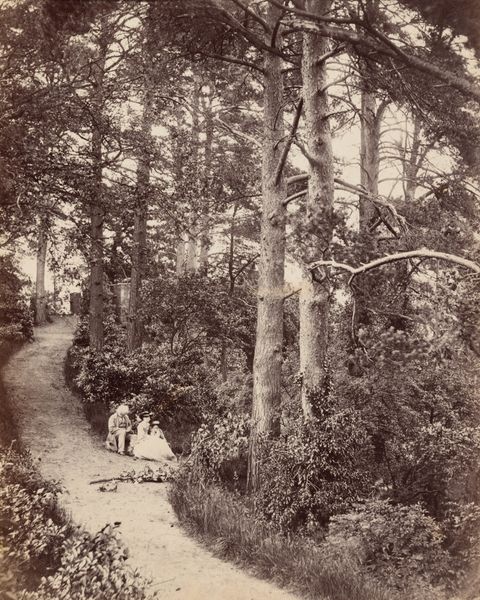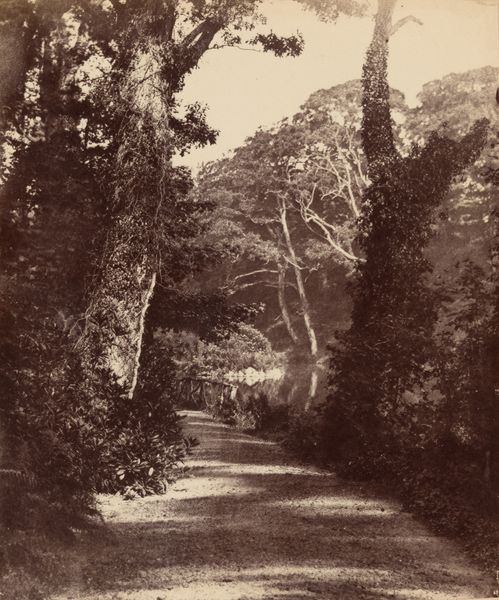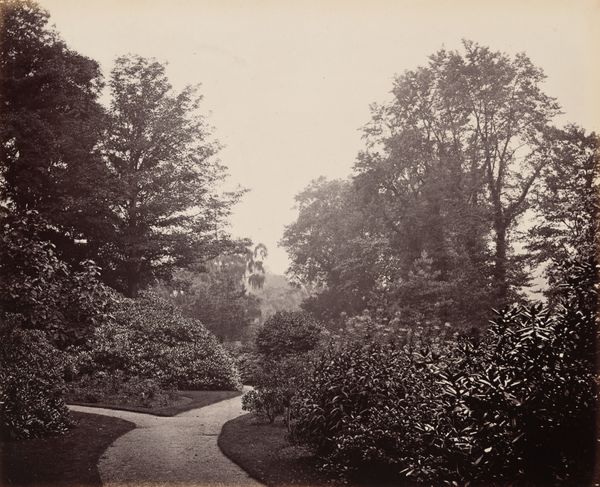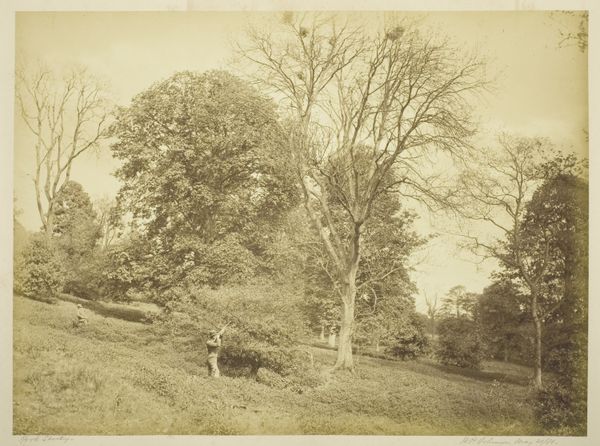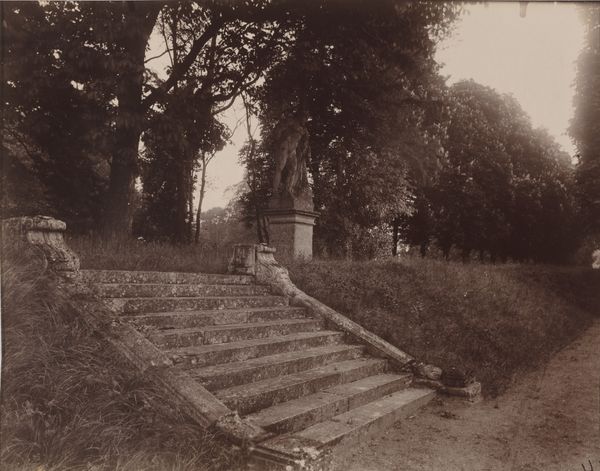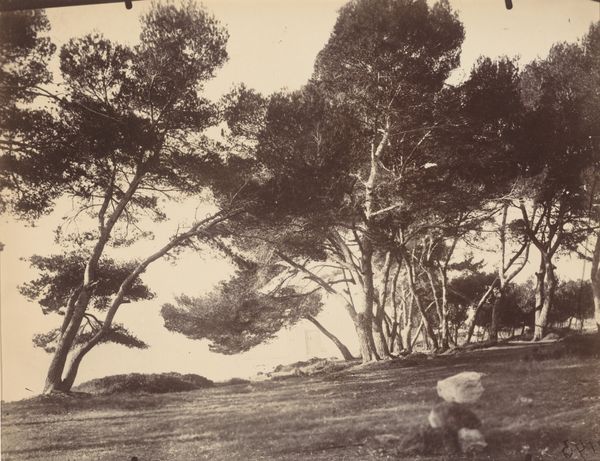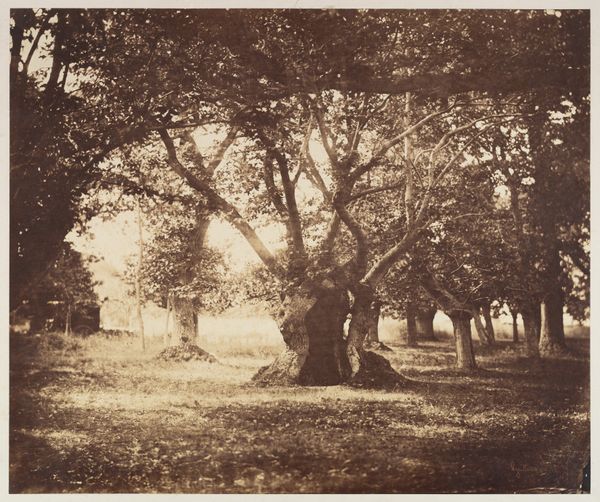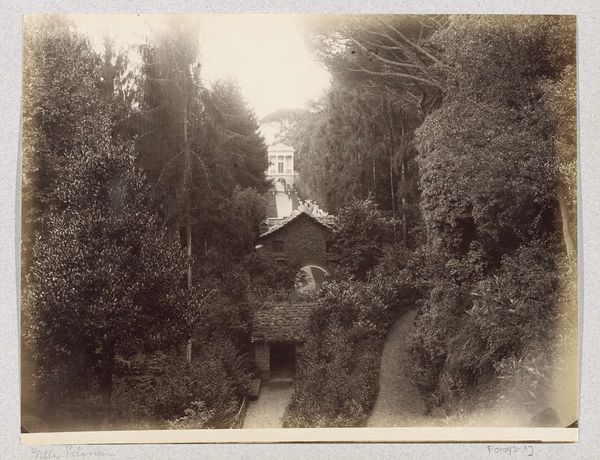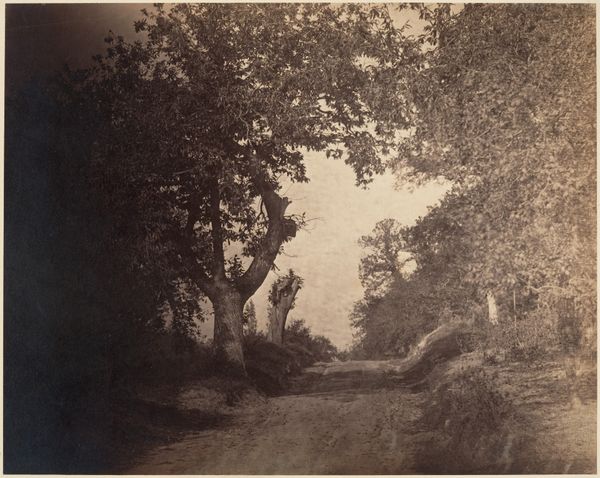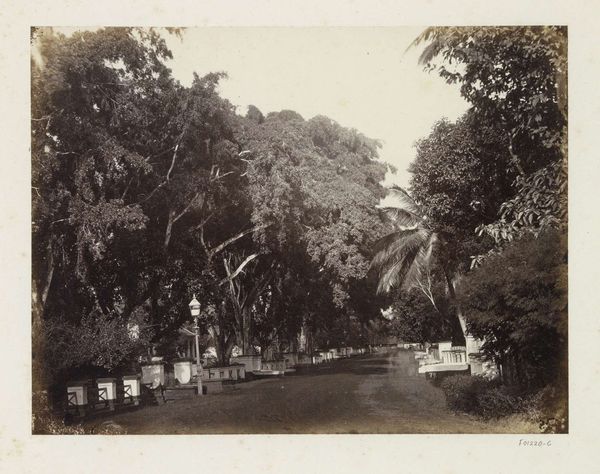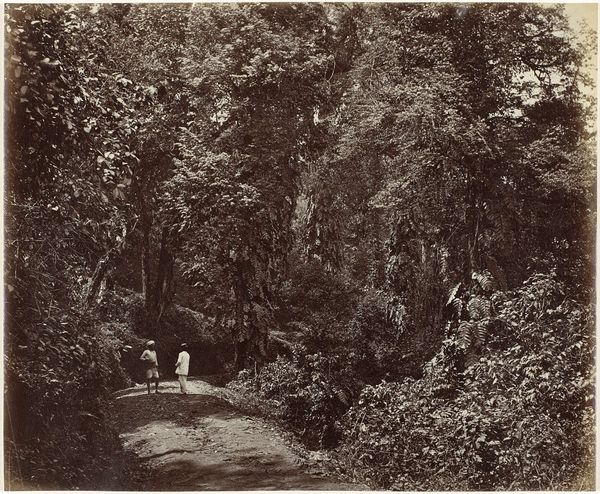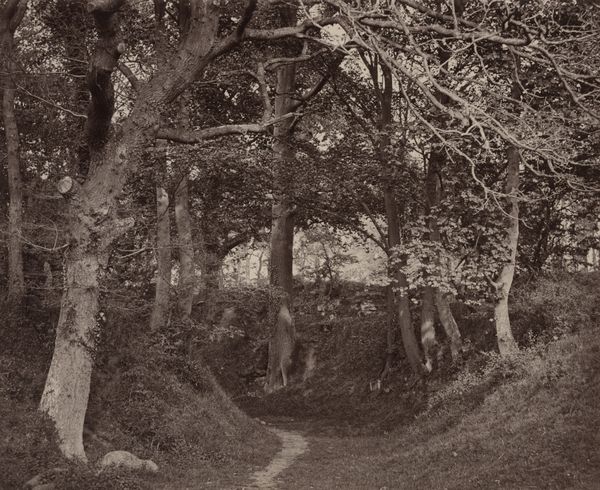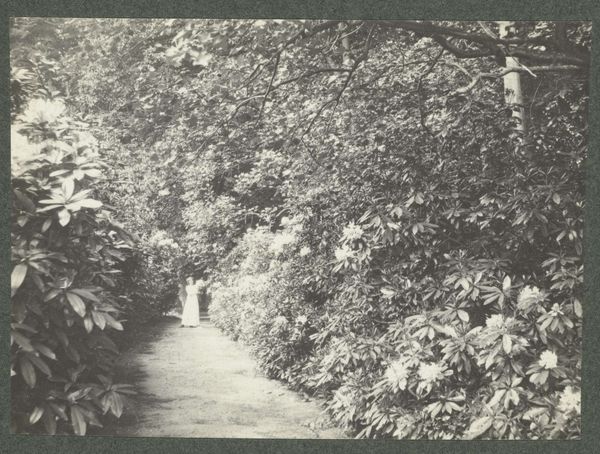
Dimensions: image/sheet: 18.9 × 23.4 cm (7 7/16 × 9 3/16 in.) mount: 23.8 × 27.4 cm (9 3/8 × 10 13/16 in.)
Copyright: National Gallery of Art: CC0 1.0
Curator: Major Francis Gresley created "At Winterdyne on the Severn" sometime in the 1860s. It's a photograph, deeply evocative of the pictorialist and romantic styles. What's your first impression? Editor: I’m immediately struck by the textures. Look at the way the light falls on the stone and foliage – a beautiful sense of decay and organic growth taking over the man-made structure. The print medium itself, seems essential to creating that particular feel. Curator: Absolutely. And consider the historical context of photography at that time. Gresley, a man of some privilege, could use this relatively new medium to explore and aestheticize his environment, but in doing so, what narratives does he inadvertently perpetuate or ignore? The figure in the frame, leaning against the wall—a worker, a servant? Their presence is secondary, almost an accessory to the landscape. Editor: Precisely. Photography in its early days was often bound by class and technology. While we can appreciate the aesthetic choices—the composition, the tonal range achieved with early photographic materials—we need to also ask: who was holding the camera, who benefited from the resulting images, and what labor went into producing not just the scene but the photograph itself? How accessible was the technology and who actually performed all the steps? Curator: The romantic aesthetic certainly idealizes nature, almost obscuring the labor and resources needed to sustain estates like Winterdyne. Are we complicit in that idealization when we view this image? Does appreciating its artistry mean we’re turning a blind eye to the underlying socio-economic dynamics? Editor: Not necessarily. Engaging critically means acknowledging the context while still examining the materiality of the artwork, asking, for example, how the collodion process affects the texture of the print and, therefore, shapes our perception of this "romantic" scene. I appreciate how the materiality reinforces, and, to a degree, also subtly undermines the ostensible topic. Curator: A crucial perspective. It pushes us to consider photography, not as a purely objective record, but as a product of specific technologies, social structures, and power relations, while not dispensing with what makes the work beautiful. Editor: Indeed, this approach reminds us that a deep engagement with an artwork means delving into its multiple layers. It isn’t an exclusively binary appreciation or condemnation. It’s about expanding and enriching the conversation around images, their making, and their implications.
Comments
No comments
Be the first to comment and join the conversation on the ultimate creative platform.
